I'm trying to animate a rotating cube. For that I use Poly3DCollection and animate it using FuncAnimation:
anim = animation.FuncAnimation(fig, visualize_rotation, fargs=[collection],
init_func=partial(init_func, ax, collection),
frames=360, interval=1000 / 30)
But it renders each frame very slowly so that I get just a few frames per second. To fix it I tried to add parameter blit=True in the hope that it will improve rendering speed, but this way I cannot see the cube.
This is what I see in the window:

Weirdly enough the cube is visible when saving the figure. This is the result I get:

I made sure that visualize_rotation returns list of artists [collection] that is required by blit=True as noted in this question, but the cube is still not visible.
So, how can I use blit flag in this case, while being able to see the cube during the animation?
Full code:
import math
from functools import partial
import matplotlib.pyplot as plt
import numpy as np
from matplotlib import animation
from mpl_toolkits.mplot3d.art3d import Poly3DCollection
def visualize_rotation(frame, collection):
angle = math.radians(2) * frame
points = np.array([[-1, -1, -1],
[1, -1, -1],
[1, 1, -1],
[-1, 1, -1],
[-1, -1, 1],
[1, -1, 1],
[1, 1, 1],
[-1, 1, 1]])
Z = np.zeros((8, 3))
for i in range(8):
Z[i, :] = [
math.cos(angle) * points[i, 0] - math.sin(angle) * points[i, 1],
math.sin(angle) * points[i, 0] + math.cos(angle) * points[i, 1],
points[i, 2]
]
Z = 10.0 * Z
# list of sides' polygons of figure
vertices = [[Z[0], Z[1], Z[2], Z[3]],
[Z[4], Z[5], Z[6], Z[7]],
[Z[0], Z[1], Z[5], Z[4]],
[Z[2], Z[3], Z[7], Z[6]],
[Z[1], Z[2], Z[6], Z[5]],
[Z[4], Z[7], Z[3], Z[0]]]
# plot sides
collection.set_verts(vertices)
print(frame)
return [collection]
def init_func(ax, collection):
ax.set_xlim(-15, 15)
ax.set_ylim(-15, 15)
ax.set_zlim(-15, 15)
ax.set_box_aspect(np.ptp([ax.get_xlim(), ax.get_ylim(), ax.get_zlim()], axis=1))
return [collection]
def animate_rotation():
fig = plt.figure()
ax = fig.add_subplot(111, projection='3d', proj_type='persp')
collection = Poly3DCollection([[np.zeros(3)]], facecolors='white',
linewidths=1, edgecolors='r', alpha=0.8)
ax.add_collection3d(collection)
# noinspection PyUnusedLocal
anim = animation.FuncAnimation(fig, visualize_rotation, fargs=[collection],
init_func=partial(init_func, ax, collection),
frames=360, interval=1000 / 30, blit=True)
plt.show()
Edit:
I've added computation of frames per second and plotted it:
timestamps = []
def visualize_rotation(frame, collection):
...
# plot sides
collection.set_verts(vertices)
global timestamps
timestamps.append(time.time())
print(round(1 / np.mean(np.diff(timestamps[-1000:])), 1))
return [collection]
def animate_rotation():
...
plt.plot(np.diff(timestamps))
plt.ylim([0, 0.1])
plt.show()
This is what happens when the window is in normal size and the drawing speed is slow (time in seconds vs frame number):

And this is the plot when the window is tiny:

The start of the plot shows resizing of the window. Only 2 frames were dropped (at about 50 and 150) in the second case, and the overall frame rate is about 30 fps as desired. I'm looking for the same kind of behavior when the window is normally sized. When I turn blit on, the plot looks fine, but the problem is that the cube is not visible.
